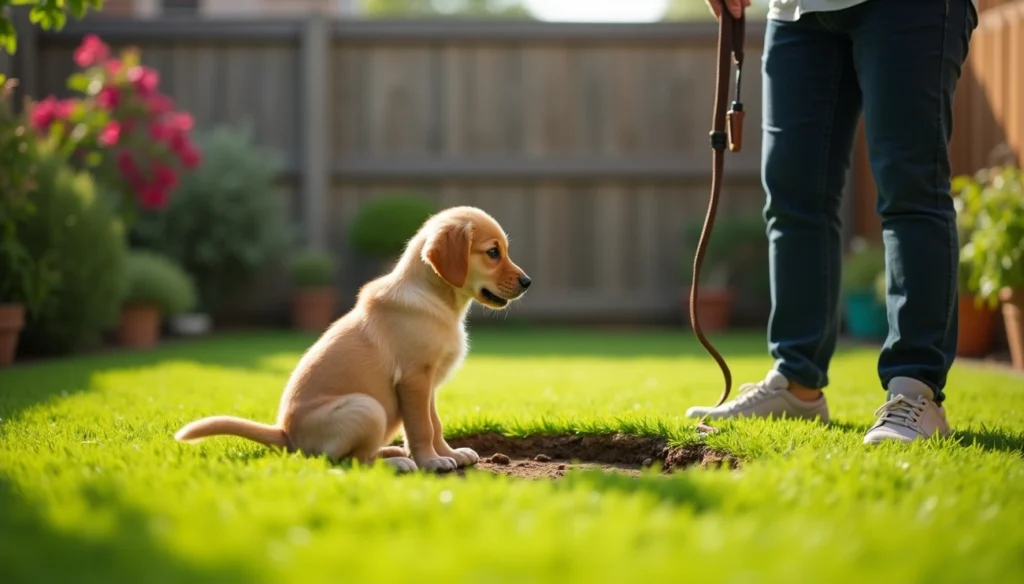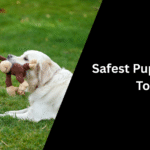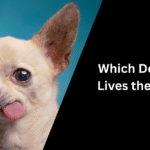To train your puppy to poop outside by setting a consistent schedule, taking them out after meals, and praising them immediately after they go. Use a designated outdoor spot so they associate it with bathroom time. Crate training helps prevent accidents indoors, and consistency builds reliable habits within 3–6 weeks.
Set Up a Routine That Works
Consistency forms the backbone of successful puppy potty training. Dogs thrive on routine, and establishing a predictable schedule helps them understand when and where they should eliminate.
Feed your puppy at the same times daily
Setting regular mealtimes creates predictable potty breaks. Puppies who eat on a consistent schedule become regular in their elimination habits, making training significantly easier.
For younger puppies under six months, serve three meals daily; older puppies can transition to two meals. Present the food for only 10-15 minutes, then remove it regardless of how much they’ve eaten. This teaches them that when the dish appears, it’s time to eat.
Furthermore, this feeding structure helps you anticipate when your puppy will need bathroom breaks. Most puppies need to eliminate shortly after eating, typically within 15-20 minutes of a meal.
Take them out after meals, naps, and play
The golden rule of puppy potty training is simple: take them out frequently and at predictable times. As a general guideline, puppies can hold their bladders for roughly one hour per month of age up to about 9-12 months. Nevertheless, even with this formula, a young puppy needs outdoor breaks every 1-2 hours.
Specifically, your puppy needs to go outside:
- First thing in the morning
- 15-20 minutes after each meal
- Immediately after waking from naps
- After play sessions or training
- Before bedtime
- Whenever they show signs like sniffing or circling
This constant vigilance might seem overwhelming at first, but the investment pays dividends in quicker training success.
Choose a consistent potty spot outside
Selecting a designated elimination area offers multiple benefits. It helps your puppy focus on the task at hand rather than getting distracted exploring. Additionally, this consistency builds a strong association between the location and the purpose.
The ideal spot should be:
- Somewhat secluded and low-traffic
- Appropriate for your dog’s size (larger dogs need more space)
- Protected from harsh weather if possible
- Away from play areas and high-traffic zones
- Free from distractions and hazards
Use Commands and Rewards to Reinforce Behavior
Effective communication is the cornerstone of teaching your puppy where to eliminate. By using clear commands and positive reinforcement, you can significantly accelerate your puppy’s understanding of proper potty behavior.
Pick a simple potty command
Selecting a consistent verbal cue helps your puppy understand exactly what you expect. Choose a simple, distinct phrase that you’ll use exclusively for bathroom breaks. Common options include:
- “Go potty”
- “Do your business”
- “Hurry up”
The actual words don’t matter as much as consistency. Initially, say your chosen command as your puppy starts eliminating. After 1-2 weeks of this association, start saying it just before they begin. By week 3-4, many puppies will respond to the command by eliminating on cue.
Reward immediately after they go
Timing is crucial for reinforcing proper elimination habits. The moment—not minutes later—your puppy finishes their business, praise them enthusiastically. Although excessive excitement might interrupt them mid-stream, quiet praise followed by immediate rewards creates powerful associations.
Treats work exceptionally well, especially during early training phases. Subsequently, once the behavior becomes established, you can gradually transition to praise alone. Moreover, avoid accidentally punishing successful elimination by bringing your puppy inside immediately afterward—this teaches them that going potty ends outdoor time. Instead, offer brief playtime or a short walk following successful elimination.
Avoid distractions during potty time
During training, potty breaks should be strictly business. Keep your puppy on a leash and head directly to their designated spot. While waiting, remain quiet and patient—excessive talking or playing diverts their attention from the primary task.
Watch for pre-elimination signals like sniffing, circling, or squatting, which indicate they’re about to go. Despite the temptation to engage in play, save fun activities until after successful elimination. This clear separation helps puppies distinguish between bathroom breaks and recreational time outdoors, making them less likely to become distracted during crucial potty opportunities.
Supervise, Confine, and Prevent Accidents
Preventing accidents is far easier than correcting them after they happen. Vigilant supervision, proper confinement, and understanding your puppy’s signals create the foundation for successful outdoor potty training.
Watch for signs like circling or sniffing
Puppies typically give clear signals before they need to eliminate. Learning to recognize these warning signs helps you intervene before accidents occur. Common indicators include:
- Sniffing the floor intently
- Circling or pacing restlessly
- Whining or pawing at the door
- Suddenly stopping play activities
- Fidgeting or becoming restless
- Squatting (immediate action needed!)
Once you notice these behaviors, immediately take your puppy to their designated potty spot. Typically, puppies need to relieve themselves within 20 minutes after eating or drinking, immediately after waking up, and following play sessions.
Use a crate or gated area when unsupervised
Fundamentally, proper confinement prevents accidents when you can’t actively supervise. Puppies instinctively avoid soiling their sleeping areas, making crates excellent training tools. The crate should be just large enough for your puppy to stand up, turn around, and lie down—if it’s too spacious, they might use one corner as a bathroom.
Alternatively, create a confined space using baby gates in a bathroom or laundry room. Throughout crate training, remember puppies can generally “hold it” for approximately one hour per month of age plus one. Undoubtedly, younger puppies require more frequent breaks.
Keep your puppy on a leash indoors if needed
For particularly challenging cases, indoor leashing provides continuous supervision. Attaching your puppy to you or nearby furniture with a 6-foot leash ensures they can’t wander off and have accidents while you’re distracted. This technique simultaneously helps establish boundaries and reinforces that good behaviors happen when they’re with you.
Ordinarily, this method works best for puppies who have frequent accidents despite other training efforts. Promptly interrupt any elimination attempts indoors with a gentle “Ah-ah!” then immediately carry them outside to their potty spot. Naturally, praise and reward them generously whenever they eliminate in the correct location.
Handle Mistakes the Right Way
Accidents are inevitable in the puppy potty training journey. Nonetheless, your response to these mishaps can either advance or hinder your puppy’s progress. The right approach turns mistakes into learning opportunities rather than setbacks.
Interrupt gently if caught in the act
Upon discovering your puppy having an accident indoors, I recommend immediately—yet gently—interrupting them. Make a quick clapping sound or say “uh-oh” to get their attention without frightening them. Swiftly pick up your puppy (even mid-stream) and carry them to their designated outdoor potty spot. This teaches them where elimination should occur without creating negative associations with the act itself. Once outside, use your potty command and praise generously if they finish their business outdoors.
Clean with enzymatic cleaners to remove scent
Regular household cleaners often fail at completely eliminating pet waste odors. Even when the spot appears clean to us, a puppy’s sensitive nose can still detect lingering scent molecules, potentially drawing them back to the same spot. Fortunately, enzymatic cleaners offer a solution by breaking down organic matter at the molecular level.
To clean effectively:
- Blot (never rub) fresh accidents to remove excess moisture
- Apply enzymatic cleaner generously to saturate the area
- Allow it to sit for 10-15 minutes for the enzymes to work
- Blot again with a clean cloth
For stubborn or older stains, covering the treated area with plastic wrap overnight helps the enzymes work more effectively by keeping the area moist.
Never punish or scold your puppy
Harsh punishments like rubbing a puppy’s nose in their waste, yelling, or physical discipline are entirely counterproductive.
These outdated methods only teach your puppy to fear you rather than understand where to eliminate properly. Your puppy cannot connect punishment to an accident that happened even minutes ago—their memory simply doesn’t work that way.
Importantly, negative reactions often lead to additional problems:
- Puppies may hide to eliminate secretly
- Some develop coprophagia (eating feces) to avoid punishment
- Many become anxious about eliminating in your presence
Instead, focus exclusively on rewarding successful outdoor potty breaks and properly managing accidents when they occur.
Conclusion
Potty training your puppy requires patience, consistency, and positive reinforcement. Undoubtedly, accidents will happen along the way, but your calm response and proper cleanup make all the difference in your puppy’s learning process. We discovered that maintaining a consistent schedule creates the foundation for successful training, while clear commands and immediate rewards cement the behavior you want to encourage.
Above all, remember that supervision stands as your most powerful tool during this process. Your attentiveness to your puppy’s signals—the circling, sniffing, and sudden restlessness—prevents accidents and builds trust between you and your furry companion. This vigilance, paired with appropriate confinement when needed, sets clear boundaries that puppies quickly learn to respect.
Eventually, your consistent efforts will transform into automatic behaviors for your puppy. The early morning trips outside, post-meal potty breaks, and praise for outdoor elimination gradually build habits that last a lifetime. With this in mind, celebrate small victories along the way—each day without accidents marks progress toward your ultimate goal.
I’ve loved dogs all my life and have cared for many different breeds over the years. Here, I share simple tips, stories, and helpful advice for all dog lovers. Whether you’re a new pet parent or a lifelong dog fan, you’ll find something useful and fun on my site.


